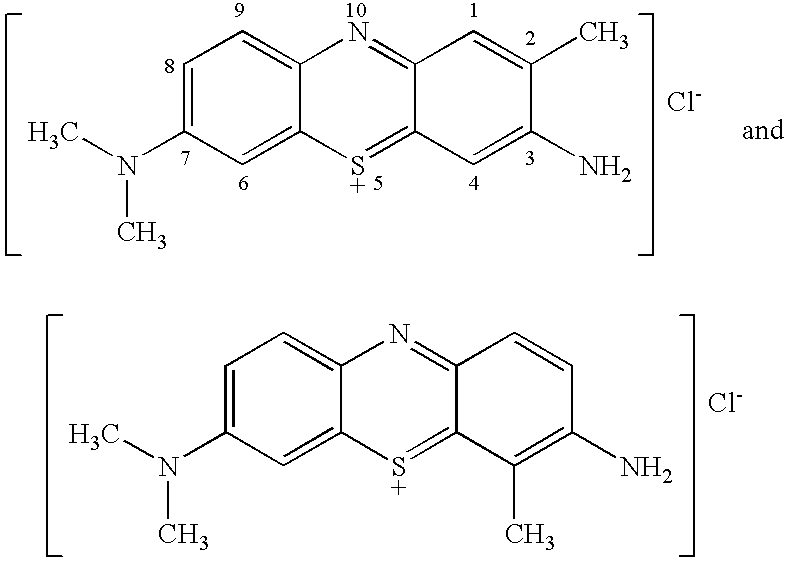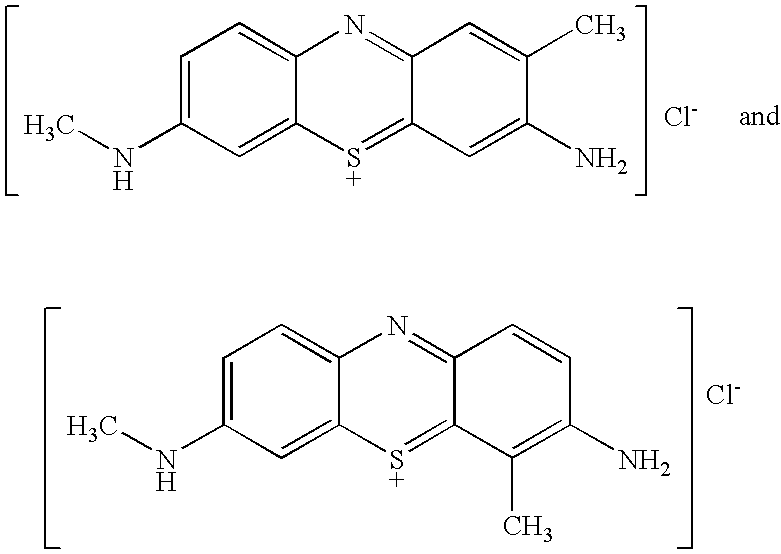Stain-directed molecular analysis for cancer prognosis and diagnosis
a molecular analysis and prognosis technology, applied in the field of stain-directed molecular analysis for cancer prognosis and diagnosis, can solve the problems of increased relative hazards of death for patients who delay obtaining a cancer consultation for at least two months, increased dna damage, and increased delay
- Summary
- Abstract
- Description
- Claims
- Application Information
AI Technical Summary
Benefits of technology
Problems solved by technology
Method used
Image
Examples
working examples
[0059]The following examples illustrate for those skilled in the art a presently preferred embodiment of the invention and are not intended as a limitation of the scope thereof.
example i
Location of Suspect Tissue By Mashberg-type Clinical Protocol
Preparation of Clinical Test Solutions
[0060]TBO (e.g., the product of Example I of U.S. Pat. No. 6,086,852), raspberry flavoring agent (IFF Raspberry IC563457), sodium acetate trihydrate buffering agent and H2O2 (30% USP) preservative (See U.S. Pat. No. 5,372,801), are dissolved in purified water (USP), glacial acetic acid and SD 18 ethyl alcohol, to produce a TBO test solution, having the composition indicated in Table A:
[0061]
TABLE AComponentWeight %TBO Product1.00Flavor.20Buffering Agent2.45Preservative.41Acetic Acid4.61Ethyl Alcohol7.48Water83.85100.00
[0062]Pre-rinse and post-rinse test solutions of 1 wt. % acetic acid in purified water, sodium benzoate preservative and raspberry flavor are prepared.
Clinical Protocol
[0063]The patient is draped with a bib to protect clothing. Expectoration is expected, so the patient is provided with a 10-oz. cup, which can be disposed of in an infectious waste container or the contents...
example ii
Genetic Alteration Molecular Analysis
[0073]58 samples of suspect tissue are obtained from various clinical sites practicing the screening procedure of Example 1. It is determined that genetic alteration analysis of two of these samples is not possible because there is inadequate material on the slides. In the remaining 56 cases neoplastic cells are carefully dissected (in cases with cancer) from normal tissue or epithelium (in all other cases) from normal tissue using a laser capture microdissection scope. This allows isolation of the cells and extraction of DNA for subsequent microsatellite analysis at three critical loci. In cases, there is insufficient DNA and further analysis is not possible. Two of the loci (D9S171 and D9S736) chosen for testing are on chromosomal region 9p21 which contains the p16 gene. A third marker (D3S1067) is located on chromosome 3p21. All molecular studies in the remaining 41 cases are done blinded without knowledge of the pathologic diagnosis.
[0074]Wit...
PUM
| Property | Measurement | Unit |
|---|---|---|
| structures | aaaaa | aaaaa |
| HPLC | aaaaa | aaaaa |
| size | aaaaa | aaaaa |
Abstract
Description
Claims
Application Information
 Login to View More
Login to View More - R&D
- Intellectual Property
- Life Sciences
- Materials
- Tech Scout
- Unparalleled Data Quality
- Higher Quality Content
- 60% Fewer Hallucinations
Browse by: Latest US Patents, China's latest patents, Technical Efficacy Thesaurus, Application Domain, Technology Topic, Popular Technical Reports.
© 2025 PatSnap. All rights reserved.Legal|Privacy policy|Modern Slavery Act Transparency Statement|Sitemap|About US| Contact US: help@patsnap.com



